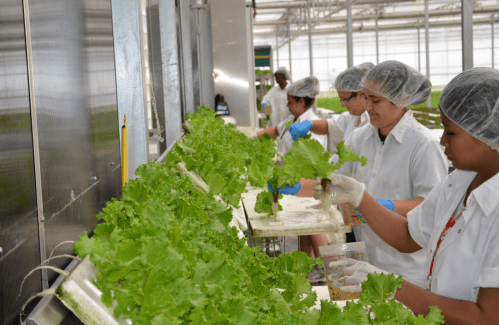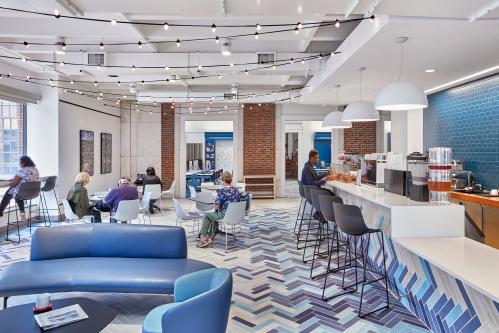Placemaking Postcards is a blog series from the Bass Center for Transformative Placemaking at Brookings where policymakers and practitioners guest-author promising placemaking efforts from across the U.S. and abroad that foster connected, vibrant, and inclusive communities. In line with the principle tenets of placemaking, the goal of the series is to recognize the community as the expert, highlight voices from the field, and to create a community of learning and practice around transformative placemaking.
 Like many cities, Boston is a patchwork of neighborhoods, each with its own distinct character, commerce, and culture—and its own unique pressures. And like many of its coastal peers, Boston’s neighborhoods are shaped by the exigencies of the real estate sector. In the newly developed Seaport district, for instance, only three of its 660 mortgages are held by Black residents.
Like many cities, Boston is a patchwork of neighborhoods, each with its own distinct character, commerce, and culture—and its own unique pressures. And like many of its coastal peers, Boston’s neighborhoods are shaped by the exigencies of the real estate sector. In the newly developed Seaport district, for instance, only three of its 660 mortgages are held by Black residents.
The relentless pace of development has threatened the vibrancy of Boston’s main streets, community gardens, and creative districts. While these challenges are often viewed distinctly, at the Boston Foundation, we saw the economic, environmental, and cultural impacts of land development as interrelated and unequally distributed. So we sought a place-based theory of change that could be attuned to these neighborhood dynamics and committed to spatial justice.
The design
To harness development for community benefit, we first asked a key question: Who represents public interest in communities? “Community” is a slippery geographic and social notion. If it’s a physical geography, how is it bounded? If it’s a social construct, what is its membership? As a grantmaker, the Foundation had to settle a practical matter of intermediaries: Where exactly do we send the check?
We ultimately determined that rather than investing in placemaking interventions, we would support the unglamorous work of place governance. We wanted to construe placemaking not as a series of actions, but as a set of dynamic political, economic, and social relationships organized within a specific geography. As partners and intermediaries in this work, we identified a continuum of place-based organizations such as parks conservancies, business improvement districts (BIDs), Main Street organizations, community development corporations (CDCs), and neighborhood clubs. Although these actors vary in mandate and models, they represent the public interest in the design, activation, and governance of shared places. They serve as stewards of social infrastructure.
Yet, these organizations are often isolated from one another and lack a collective voice. We theorized that by convening them as a cluster, we could not only enhance their individual capacities, but contribute to a stronger, more networked field.
The selection
In May 2019, we released an open call to apply for the Place Leadership Network (PLN). PLN would convene a disparate field of “place leaders” in a peer-learning initiative and invest philanthropic resources into their ongoing impact. Participants would be compensated for their yearlong commitment and be eligible for unrestricted funding at the end of the year to support community-led placemaking and place-keeping agendas. We asked applicants to choose a team of three to participate in the network, but left it open as to whether they select staff, board members, unaffiliated community residents, or other partners.
We received 40 applications, ranging from well-funded CDCs and conservancies to small cultural councils and garden clubs. We ultimately selected eight teams based on their curiosity, readiness for change, and, most importantly, their intentional focus on spatial justice. Five teams serve communities of color: the predominantly Afro-Caribbean Bowdoin Geneva, Roxbury’s Nubian Square, historic Chinatown, the Latin Quarter, and a community of South American residents in Salem’s El Punto neighborhood. Two teams maintain open-space networks that stitch together communities of varied socioeconomic profiles. The last—a BID-led consortium of creative organizations—oversees place-keeping in a diverse area with Cambridge’s largest public housing development, artist workspaces, and a sizable population of unhoused people. Seven of the eight teams are led by people of color, three by immigrants, and six by women. Half of the teams have organizational budgets under $250,000.
The learning experience
PLN centered on a peer-driven learning experience. For nine months, the cohort gathered for full-day sessions organized around themes such as urban design, policy, funding, and resilience. Each session included site visits to teams’ communities, readings, guest presentations, social activities, and shared meals.
We initiated a partnership with the Harvard Graduate School of Design (GSD), whose students provided technical assistance to PLN teams. We coordinated curricula so the students’ learning would parallel that of the cohort. Though this model had limitations, GSD students brought a great deal of value. We were anxious about how this partnership would affect the cohort dynamics, recognizing that our two institutions wield power and carry long legacies of injustices. (The cohort would rightly point out that philanthropy often exacerbates the problems it claims to solve.)
Yet, another stated goal of PLN was to facilitate contact between place-based organizations and holders of institutional power. Over the course of the year, some 40 resource-holders—including state agency representatives, elected officials, academic thought leaders, real estate developers, urban planners, and others—participated in the initiative as guests. To varying degrees, these contacts enriched the cohort’s learning experience and expanded access to resources. Some encounters resulted in unexpected alliances, but not all were productive or well received. In some cases, the cohort was unsure if they were learning from the guests, or vice versa.
The pivot
The COVID-19 pandemic disrupted the pilot, but did not destroy it. The learning process had always been nimble, adapting as the group expressed its perspectives and preferences, and proved remarkably pandemic-proof.
At the same time, PLN organizations’ work rapidly changed. Place-based organizations were thrust to the frontlines of public health, and the cohort immediately pivoted to sustaining the most critical social infrastructure of their places. Our group discussions changed accordingly. In March, public health expert Nineequa Blanding facilitated a virtual discussion about social determinants of health. Sociologist Eric Klinenberg shared his research on social cohesion in a time of physical isolation.
In a December survey, participants told us that of all the PLN’s facets, what they valued most was being together. More than formal learning, more than access to resource-holders, more than technical assistance, they benefited from contact with one another. Through a period of immense pressures, the PLN cohort held strong. We remained in near-daily communication, organized group catchups, forwarded links, and scheduled individual wellness checks. As one participant put it, paradoxically, the pandemic couldn’t have come at a better time.
It was a deeply emotional period, particularly as members suffered personal losses while struggling with their places’ challenges. But it was also a generative one: When the Central Square BID surveyed its district and compiled results into an advocacy presentation, the Asian Community Development Corporation rapidly replicated that approach, with Harvard GSD students helping to analyze and visualize data. At the same time, the Boston Foundation distributed $75,000 in grants through a COVID-19 relief fund to support the work of PLN teams.
The funding
The most compelling evidence of the cohort’s new collective identity was in the distribution of grant funds at the conclusion of the program. We had initially imagined a grantmaking process along familiar lines: We would ask the cohort to submit applications, run them past an independent panel, and determine awards based on the panel’s recommendations.
When we introduced this idea to the cohort, the Zoom checkerboard filled with disapproving shaking heads. Aren’t we here to cooperate, not compete? Isn’t this an opportunity to learn from one another? Shouldn’t we, in the prevailing spirit of PLN, self-determine the outcome? One participant suggested that if the cohort were to disagree with the Foundation’s decisions, they would redistribute the funding among themselves.
They were right. Together, we rethought the grantmaking approach to foreground values of peer learning, mutual support, and equity. We removed the competition by guaranteeing substantial, equal funding to each team. Instead of an application, each team briefly reflected on their time in PLN; these reflections were shared among peers with space to comment and offer ideas or partnership. The cohort chose to reserve part of the funds to distribute among themselves, in a participatory grantmaking process driven by an equity rubric. These remaining funds went to those PLN organizations working with budget limitations in historically disinvested places.
The future
The Boston Foundation prides itself on incubating new ideas that challenge the status quo. Yet, as much as a foundation offers an ideal testing environment, the next iteration of place-based work must be community-driven and autonomously operated. PLN demonstrated that community leaders can fully, confidently, and justly shape the futures of their shared places. Through the months, we kept hearing a similar refrain from the cohort: If Boston has any hope of altering development dynamics to center community interest and spatial justice, we need to continue shifting the power balance.
This kind of systemic shift requires a great deal more than a foundation. It requires a sustained conversation among policymakers, developers, lenders, planners, activists, and academics, with explicit leadership by community members themselves. It requires a venue for doing so and a commitment from institutions to supporting such a venue while allowing it plenty of independence. It requires the delicate and deeply vulnerable labor of repairing trust between communities and the professionals and agencies that serve them. Then—and only then—can Boston transform from a city designed by developers to one determined by communities.
The Brookings Institution is committed to quality, independence, and impact.
We are supported by a diverse array of funders. In line with our values and policies, each Brookings publication represents the sole views of its author(s).








Commentary
How an equitable place governance pilot in Boston is shifting power balances
December 2, 2020